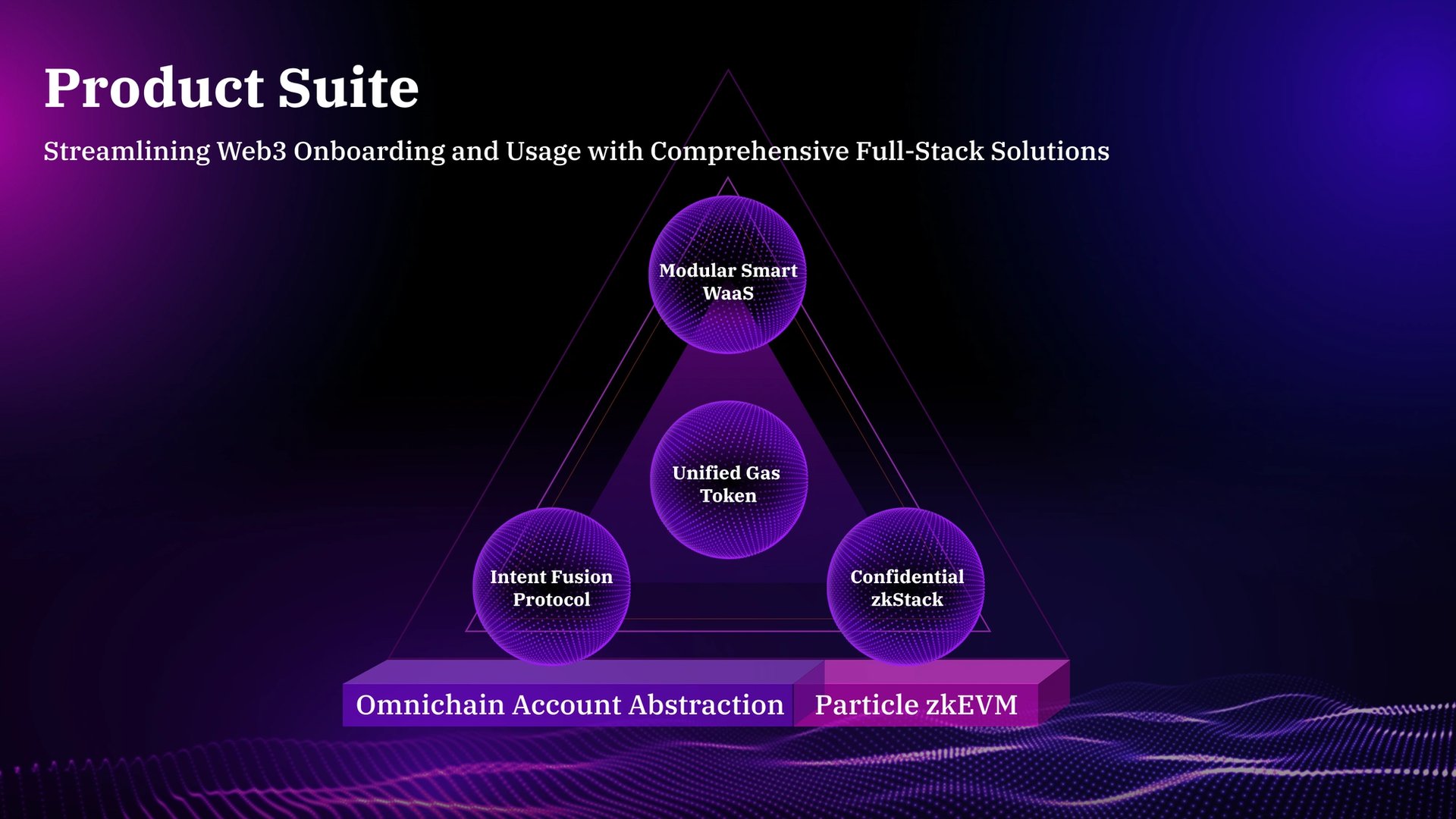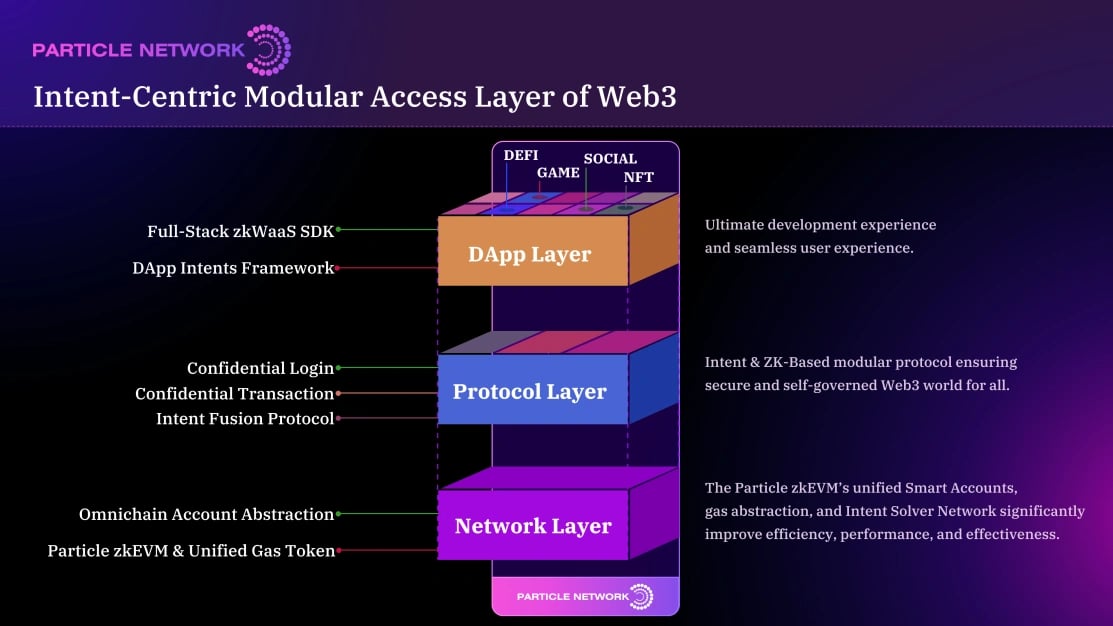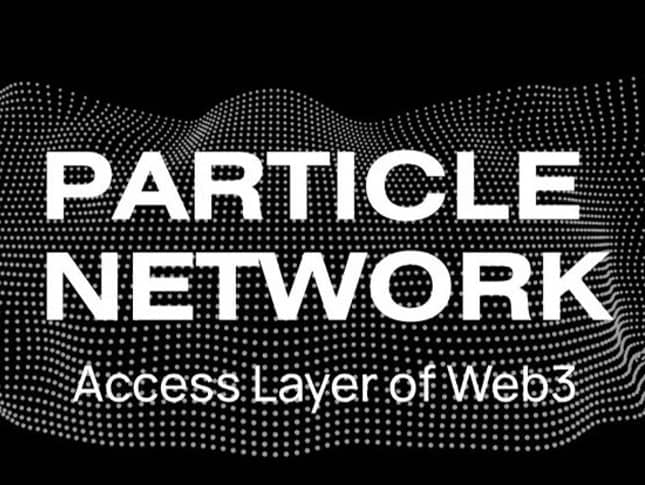Subscribe to wiki
Share wiki
Bookmark
Particle Network
Particle Network
Overview
Particle Network is an intent-centric, modular access layer of web3 applications 2. With Particle's Smart Wallet-as-a-Service, developers can curate Web2-adjacent user experience through modular and customizable EOA/AA embedded wallet components. Using MPC-TSS for key management 4, Particle can enable user onboarding via familiar web2 accounts - such as Google accounts, email addresses, and phone numbers.
Beyond Smart Wallet-as-a-Service, Particle Network offers various UX-centric products, such as the Intent Fusion Protocol powering intent-centric design 3, their Confidential zkStack enabling confidential social logins and transactions 6, alongside supporting infrastructure such as Particle Network's Universal Gas Token 5, the Particle zkEVM , etc.

Particle Network's Flagship Product: Modular Smart Wallet-as-a-Service
Particle's Modular Smart Wallet-as-a-Service (WaaS) 1 tools allow developers to tap into MPC-TSS and social logins to enable self-custodial, dApp-embedded wallets accessible through users' Web2 accounts. It also empowers them to leverage the potential of ERC-4337 account abstraction, enabling a more flexible, alternative user experience.
In short, Modular Smart WaaS allows developers to interact natively with AA while directly tied to an instance of Particle’s WaaS. This fulfills the following critical points:
- Seamless onboarding via WaaS & non-custodial key management: Particle’s existing implementation of WaaS features advanced MPC-TSS private key management. Combined with social authentication, this ensures that end users can be securely onboarded –regardless of their level of familiarity– into Web3.
- Leveraging AA’s flexibility without compromising application complexity: This empowers developers to build all kinds of applications, making the most out of AA’s capabilities. Particle’s AA-SDK enables familiar mechanisms of interacting with smart accounts programmatically –such as familiar transaction structures, building, and account management– all handled by the SDK.
- AA modularity via WaaS: Particle’s AA SDK allows developers to approach AA modularly, plugging into their preferred smart account implementations, Bundlers, Paymasters, etc., with ease. As a WaaS provider, Particle can also be plugged into any initial/onboarding point within AA applications, even if they don’t natively use the AA SDK. As such, even non-native AA applications can leverage Particle’s WaaS for onboarding.
Upcoming Products
Particle's next evolutionary steps include the introduction of Omnichain Abstraction, a Confidential zkStack, and the Intent Fusion Protocol. These are supported by the Particle Chain and the Particle Network Token to round up the network's economic model.
Here's a quick outline of the different components of the Particle Network ecosystem. Particle conceptualizes the above evolution as the combination of three pillars, their underlying tech, and an economic system holding them all together.
The three pillars are:
- Modular Smart Wallet-as-a-Service, explained above.
- Particle's Confidential zkStack: Improving upon the WaaS framework by tackling the issues of identity disclosures in WaaS products and the inherent transparency of most L1 and L2 blockchains. By introducing zero-knowledge technology, we are able to provide two services: Confidential Login and Confidential Transaction. As a result, Particle will facilitate a system in which users’ data is wholly owned and managed by them.
- The Intent Fusion Protocol: The Intent Fusion Protocol is a permissionless universal framework for expressing, transforming, and executing users’ goals. It can enable the creation of intent
- and user-centric products, integrating a DSL (Domain Specific Language) to radically simplify the dApp development experience. Developers can use the Intent Fusion Protocol’s DSL to express user intents through Input and Output constraints instead of transactions, submitting them to a network of Solvers for on-chain execution. This relieves users of the burden of self-defining and executing all the steps to meet their goals and shifts developers' focus to simply outlining intents.
These pillars are supported by the following:
- Omnichain Account Abstraction: This technology addresses two critical issues for Web3 adoption: The management and standardization of users’ accounts across chains and the cognitive load and friction of interacting with a complex multi-chain ecosystem. With Omnichain AA, users can have a unified Smart Contract Account address across different EVM chains. Omnichain AA additionally addresses the issue of facilitating compatibility with chains that are EVM-friendly but have different AA implementations and, as such, cannot be unified with ERC-4337 addresses. Similarly, in combination with third-party cross-chain messaging solutions (such as LayerZero, CCIP, Axelar, Connext, etc,) it can also facilitate cross-chain interactions.
- The Particle Chain: Particle Network will use an independent zkEVM to act as the full-chain Storage database for smart accounts. Changes to an account's Storage are handled by the Particle Chain and eventually synchronized to the Account's local storage on other chains. This not only plays a role in Omnichain AA, but also acts as the zk-proof generator for the Confidential zkStack. The Particle Network Token serves as the native token of the Particle Chain.
- The Particle Network Token: Particle's token acts as a unified gas unit to abstract elaborate gas mechanisms, simplifying the usage of smart accounts across chains. Inspired by previous successful economic models, Particle Network’s accrues value for the ecosystem and its stakeholders via network effects. This aligns the incentives of different types of stakeholders, helps accelerate the network’s growth, and ignites a value accrual cycle. The token also secures the Particle Chain via a Proof-of-Stake system and may eventually be used for governance.

See something wrong?
